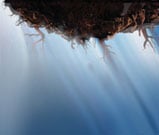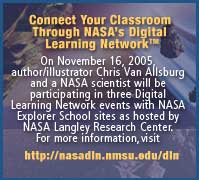 |
Lesson Plan: Asteroid Resources: The Stepping Stone to Beyond

 
Materials
• Resource materials about: space travel, space resources, asteroids,
rockets, space shuttle, spacecraft• Personal log (journal) • Art supplies • Reproducibles 1–4. Lesson Background (PDF), Name Those Asteroids! (PDF), Lesson Scenario (PDF), Brainstorm (PDF). Procedures
Advance Preparation1. Read background material. 2. Assemble research materials or know where students may find them. 3. Copy and distribute Reproducibles as needed. Classroom Procedure 1. Present Reproducible 1, Lesson Background (PDF), so that students may familiarize themselves with basic information. Reproducible 2, Name Those Asteroids! (PDF) can be distributed to reinforce information on asteroids and other small bodies in space. 2. Present Reproducible 3, Lesson Scenario (PDF), and then brainstorm about what facts about asteroids might be needed to prepare for a mission that would prospect for water, oxygen, or metals. 3. Brainstorm the important components that must be designed or built to mount a prospecting expedition to an asteroid. Topics to be addressed may include: propulsion (type of rocket), power, life support, communications, financing (including valuable things that could be mined on an asteroid and returned to Earth), crew selection (including human vs. robotic), ground support, vehicle design, maintenance, prospecting tools, and training. 4. Each team selects a topic from those suggested—all members of the team should reach consensus. 5. Teams will research and document their topics, keeping a log of sources investigated, relevant data found, relevant conversations, meetings, etc. The research should include a “major points” outline, visual aids, references used, and list of possible problems to be resolved through research. Teams should also list “interfaces” with other aspects of the expedition design (e.g., the electrical power team needs to know how large the crew is, how the life-support system runs, and whether the prospecting tools require electricity). 6. Team results should include the basic questions or trade-offs for their part of the prospecting expedition, advantages and disadvantages for each option (e.g., power from solar cells versus power from a nuclear reactor), and a recommendation of which option is best for the expedition. Groups should present their results to the class. 7. Once presentations are complete, distribute Reproducible 4, Brainstorm (PDF), to get students thinking about space exploration. Teaching with the Poster There are all kinds of objects that orbit the Earth, the Sun, and other planets. Could a house launch into orbit, as the poster depicts? Could it travel through space? Show students the poster, and encourage them to come up with questions the image raises. (How much force is required to lift a house that far into space? How fast would the house need to be traveling, and in what direction? What would prevent the house from burning up in our atmosphere?) While you discuss these questions, keep track of science topics raised in the discussion. Keep a list on the board. Areas of interest might include: acceleration, satellite, meteor, asteroid, orbit, gravity, jet propulsion, and velocity. Students can then visit www.nasa.gov to conduct research and explore their questions. Additional Teacher Resources
Visit www.nasa.gov and use the search function on the main page to access additional teacher resources that provide the latest information on the science of space. Resources found on www.nasa.gov can be used to provide students with a subject background before proceeding with the lesson, to amplify students’ knowledge of specific topics, or to supplement the lesson as you progress through it. Visit www.Zathura.net for a language arts lesson plan based on Zathura, plus links to other lesson plans on books by Chris Van Allsburg. Photo Credits: ZATHURA: The Movie © 2005
Columbia Pictures Industries, Inc. All Rights Reserved. © 2005 Columbia Tristar Marketing Group, Inc. All Rights Reserved. You will need Adobe Acrobat Reader® software, version 4.0 or higher
to view and print items marked PDF. |
     |


